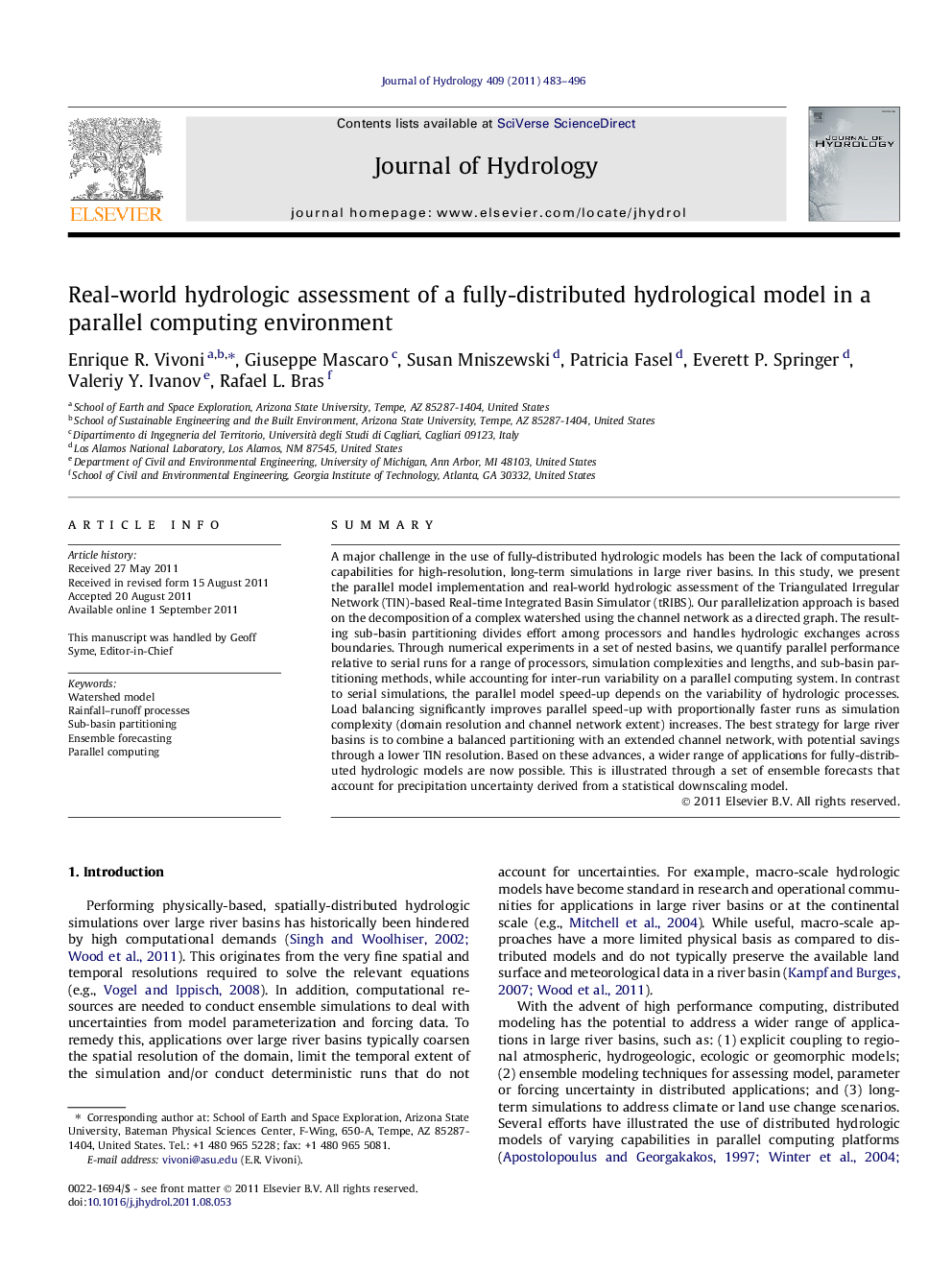| Article ID | Journal | Published Year | Pages | File Type |
|---|---|---|---|---|
| 4577506 | Journal of Hydrology | 2011 | 14 Pages |
SummaryA major challenge in the use of fully-distributed hydrologic models has been the lack of computational capabilities for high-resolution, long-term simulations in large river basins. In this study, we present the parallel model implementation and real-world hydrologic assessment of the Triangulated Irregular Network (TIN)-based Real-time Integrated Basin Simulator (tRIBS). Our parallelization approach is based on the decomposition of a complex watershed using the channel network as a directed graph. The resulting sub-basin partitioning divides effort among processors and handles hydrologic exchanges across boundaries. Through numerical experiments in a set of nested basins, we quantify parallel performance relative to serial runs for a range of processors, simulation complexities and lengths, and sub-basin partitioning methods, while accounting for inter-run variability on a parallel computing system. In contrast to serial simulations, the parallel model speed-up depends on the variability of hydrologic processes. Load balancing significantly improves parallel speed-up with proportionally faster runs as simulation complexity (domain resolution and channel network extent) increases. The best strategy for large river basins is to combine a balanced partitioning with an extended channel network, with potential savings through a lower TIN resolution. Based on these advances, a wider range of applications for fully-distributed hydrologic models are now possible. This is illustrated through a set of ensemble forecasts that account for precipitation uncertainty derived from a statistical downscaling model.
► We quantify the performance of a new parallelization method for a distributed model. ► Parallel model performance is found to be dependent on the hydrologic variability. ► Load balancing methods improve parallel performance in particular for large domains. ► A wider range of distributed applications is now possible through parallelization.
